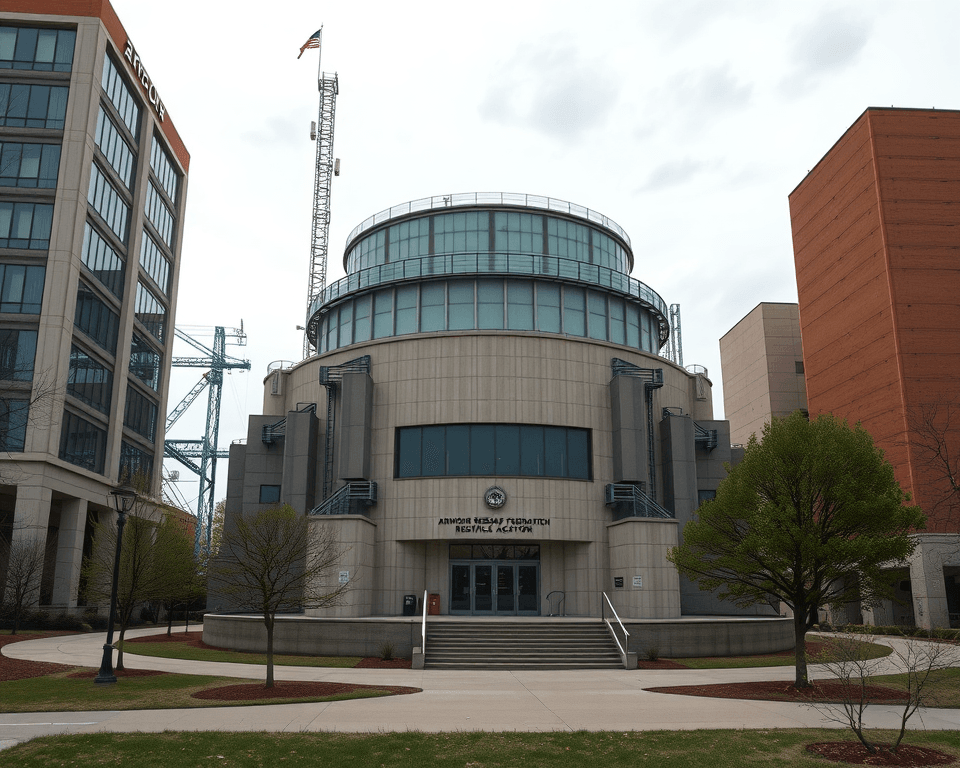In a monumental recognition of its groundbreaking contributions to nuclear research, the Armour Research Foundation Reactor at Illinois Institute of Technology (Illinois Tech) has been officially designated a Nuclear Historic Landmark by the American Nuclear Society (ANS). This prestigious honor, awarded on April 18, 2025, places the reactor among an elite group of fewer than 100 sites across the United States that have received this distinction, solidifying its place in history as the world’s first private nuclear reactor.
From Wartime Secret to Public Pursuit
The Armour Research Foundation Reactor, affectionately nicknamed “the atomic furnace,” represents a pivotal shift in the history of nuclear research. Constructed in 1956, it marked a departure from the secretive, wartime origins of nuclear technology towards a more open and publicly celebrated pursuit of knowledge and progress.
“The story of the Armour Research Foundation Reactor reflects both the optimism and the challenges of embracing new technologies,” says Jeff Terry, Illinois Tech’s Vice Provost for Research. “As we continue to explore the possibilities of nuclear energy today, this pioneering effort at Illinois Tech serves as a reminder of the progress made and the potential that still lies ahead.”
A Collaborative Effort
The construction of the reactor was a collaborative endeavor, with contributions from 25 industry partners, including prominent names like IBM, Inland Steel, Caterpillar, Kimberly-Clark, U.S. Steel, and Whirlpool. This widespread support from various sectors highlights the broad interest in harnessing atomic energy for peaceful purposes during the mid-20th century.
Pioneering Research and Innovation
For 11 years, the Armour Research Foundation Reactor served as a hub for groundbreaking research, impacting diverse fields such as:
- Agriculture: Fertilizer absorption and pest control studies.
- Chemistry: Catalysis and diffusion investigations.
- Food Safety: Cold sterilization techniques and shelf-life extension methods.
- Medicine: Production of short-lived diagnostic isotopes.
The reactor’s unique design, utilizing liquid nuclear fuel (Uranium-235 in the form of uranyl sulfate dissolved in water), further emphasized safety in nuclear technology, particularly in a densely populated urban environment like Chicago.
A Legacy of Safety and Innovation
“If the reaction ran away, the liquid would expand, and the change in geometry would stop the criticality,” explains Terry, highlighting the inherent safety mechanisms built into the reactor’s design.
The Armour Research Foundation Reactor’s designation as a Nuclear Historic Landmark serves as a testament to its pioneering role in advancing nuclear science and technology, its commitment to safety, and its contributions to various fields that have improved countless lives.
The Dawn of Nuclear Energy: A Look Back
To fully appreciate the significance of the Armour Research Foundation Reactor, it’s essential to understand the historical context in which it emerged. The story begins with the urgent scientific endeavors of World War II, leading to the controlled release of nuclear energy.
The Manhattan Project: A Race Against Time
Driven by the fear that Nazi Germany was developing atomic weapons, the United States launched the Manhattan Project, a top-secret research and development undertaking. This massive effort brought together the brightest scientific minds to explore the potential of nuclear fission.
Chicago Pile-1: The First Controlled Chain Reaction
A crucial milestone in the Manhattan Project was the creation of Chicago Pile-1 (CP-1), the world’s first artificial nuclear reactor. On December 2, 1942, beneath the stands of Stagg Field at the University of Chicago, a team led by Enrico Fermi achieved the first self-sustaining nuclear chain reaction. This groundbreaking experiment proved that nuclear energy could be controlled and harnessed.
From Wartime to Peacetime: Exploring the Potential of Atomic Energy
As World War II drew to a close, the focus shifted from military applications of nuclear energy to its potential for peaceful uses. The newly established Atomic Energy Commission (AEC) was tasked with exploring these possibilities.
B Reactor: The First Large-Scale Nuclear Reactor
Another significant development in the early history of nuclear reactors is the B Reactor at the Hanford Site in Washington state. This reactor, built as part of the Manhattan Project, was the first large-scale nuclear reactor ever constructed. It began operation in September 1944 and produced plutonium-239, a key component of atomic bombs. The B Reactor has also been recognized as a National Historic Landmark.
Key Milestones in Reactor Development
- 1942: Chicago Pile-1 achieves the first self-sustaining nuclear chain reaction.
- 1943: The X-10 Graphite Reactor at Oak Ridge begins operation, producing plutonium and radioisotopes.
- 1944: The B Reactor at Hanford begins operation, producing plutonium for atomic bombs.
- 1951: Experimental Breeder Reactor I (EBR-I) generates electricity, marking the beginning of the nuclear power industry in the United States.
- 1956: The Armour Research Foundation Reactor becomes the first privately owned and operated nuclear reactor.
Other Reactors Recognized as Historic Landmarks
Several other reactors have been recognized for their historical significance, including:
- Experimental Breeder Reactor I (EBR-I): Located in Idaho, EBR-I was the first nuclear reactor to generate electricity and the first to demonstrate the breeding of nuclear fuel.
- X-10 Graphite Reactor: Located at Oak Ridge National Laboratory, the X-10 Graphite Reactor was a pilot plant for plutonium production and radioisotope research.
The Armour Reactor’s Unique Design
What set the Armour Research Foundation Reactor apart was its innovative design, which prioritized safety in a densely populated urban environment. The reactor employed a liquid nuclear fuel, Uranium-235 in the form of uranyl sulfate dissolved in water. This design had a built-in safety mechanism: if the reaction ran out of control, the liquid would expand, changing the geometry of the reactor and automatically shutting down the chain reaction. This feature was particularly important given the reactor’s location in the heart of Chicago.
Contributions to Science and Industry
During its 11 years of operation, the Armour Research Foundation Reactor made significant contributions to various fields. Researchers used the reactor to conduct experiments in isotope production and materials analysis, leading to advancements in:
- Agriculture: Studies on fertilizer absorption and pest control helped improve agricultural practices.
- Chemistry: Research on catalysis and diffusion led to new chemical processes and materials.
- Food Safety: Experiments on cold sterilization and shelf-life extension contributed to safer and longer-lasting food products.
- Medicine: The production of short-lived diagnostic isotopes enabled new medical imaging techniques.
A Symbol of Progress and Potential
The Armour Research Foundation Reactor’s legacy extends beyond its specific research contributions. It stands as a symbol of the optimism and potential that surrounded nuclear technology in the mid-20th century. It represents a time when scientists and engineers believed that nuclear energy could solve many of the world’s problems, from energy shortages to disease.
The Ongoing Debate
The use of nuclear energy remains a subject of debate, with concerns about safety, waste disposal, and the potential for weapons proliferation. However, proponents of nuclear power argue that it is a clean and reliable source of energy that can help reduce greenhouse gas emissions.
Looking Ahead
As we continue to explore the potential of nuclear energy, the Armour Research Foundation Reactor serves as a reminder of the progress that has been made and the challenges that remain. Its designation as a Nuclear Historic Landmark ensures that its story will be preserved and shared with future generations, inspiring them to pursue innovation and excellence in science and technology.
Illinois Tech’s Commitment to Nuclear Research
Illinois Tech remains committed to nuclear research and education. The university offers a variety of programs in nuclear engineering and related fields, preparing students to address the challenges and opportunities of the nuclear age.
Visiting the Landmark
While the Armour Research Foundation Reactor is no longer operational, its legacy lives on at Illinois Tech. Visitors can learn about the reactor’s history and significance through exhibits and educational programs. The university also hosts events and lectures on nuclear science and technology.

